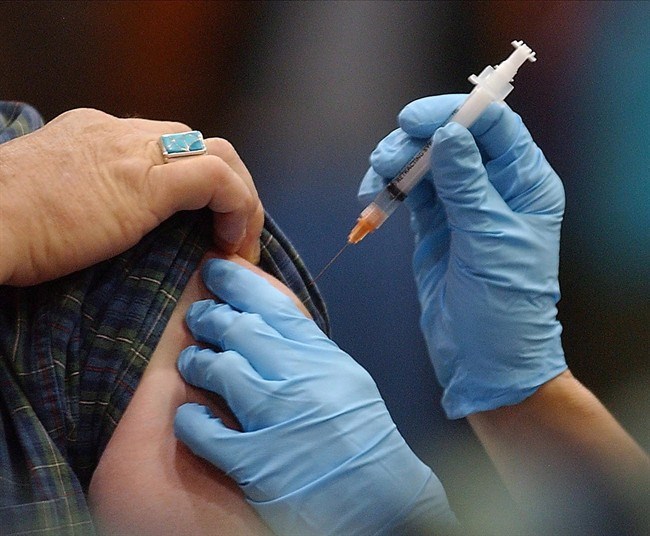Children and middle-age adults are having a rough ride from the H1N1 influenza virus this year, public health officials say.
“We’re definitely seeing the H1N1 virus in both adults and children this year,” said Dr. Dee Hoyano, a medical health officer with Island Health. “And H1N1 has a tendency to affect middle-aged adults more than other forms of influenza.”
Older adults are getting the flu, but this year Island Health is seeing more middle-age adults going to the hospital with it.
Typically, a relatively healthy middle-age adult wouldn’t need to come into hospital for the flu, Hoyano said.
Island Health has also dealt with serious pediatric cases of influenza, she said. As of Wednesday, there were 52 reported cases of H1N1 in children 18 and younger — about one-quarter of the 197 lab-confirmed cases.
“Kids get influenza, but the ones who are getting it we’re seeing more of because they’re more severely ill than last year,” Hoyano said.
The doctor was not aware of any deaths, but said some children have been treated in the intensive care unit.
The majority of influenza cases on Vancouver Island have been the H1N1 strain, Hoyano said. There are also some cases of H3N2 influenza, a strain that is particularly hard on older adults.
“Often, we see more than one influenza strain throughout the whole winter season,” she said. “We start off with one and gradually when you get into the new year, you often see a different strain taking over. But for the peak we had in December and January, it’s been H1N1.”
H1N1 is in a similar category as the virus that caused the swine flu pandemic 10 years ago. But health authorities are not as worried as they were then.
The 2008 swine flu pandemic was a completely new influenza virus, Hoyano said.
“Because it’s been around now for 10 years, it’s become one of our regular influenza viruses,” she said.
“It’s not a very different strain from what we saw last year or the year before.
“I always worry about influenza in general, but this isn’t something drastically different or as unpredictable as a pandemic influenza.”
The virus changes a little bit every year. That’s why people can get flu every year and that’s why the vaccine changes every year, Hoyano said.
“Basically, we’re trying to keep up with what the latest, most common virus is.”
In an H3N2 flu season, the average age of hospitalized patients is close to 80. The average age this year is 60, Hoyano said.
The H3N2 strain hits older people hard because they are already vulnerable.
“They can get quite sick and there can be deaths because of complications,” Hoyano said.
It’s important for people who have underlying health problems, particularly lung or heart disease or a low immune system, to be aware that the flu can be bad — and that it can get quite bad quite quickly, she said.
Handwashing is extremely important in preventing illness.
“The other thing we’re seeing right now is the norovirus winter vomiting bug,” Hoyano said. “And vigorous hand washing definitely helps to prevent it.”
Norovirus is very easily transmitted by touch.
“The most common route is someone had vomiting or diarrhea somewhere and you touch it and eat something,” Hoyano said.
“A tiny droplet on the wall will spread the virus.”
The medical health officer said she realizes it is getting harder and harder for people to stay home when they are sick, but emphasized that it’s important for people to give themselves time to recover.
“Maybe it’s like a new year’s resolution: Take care of yourself first to be productive and contribute.”



